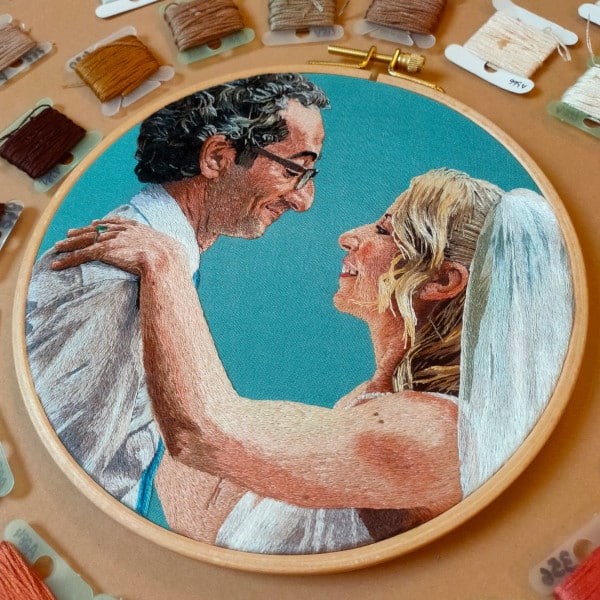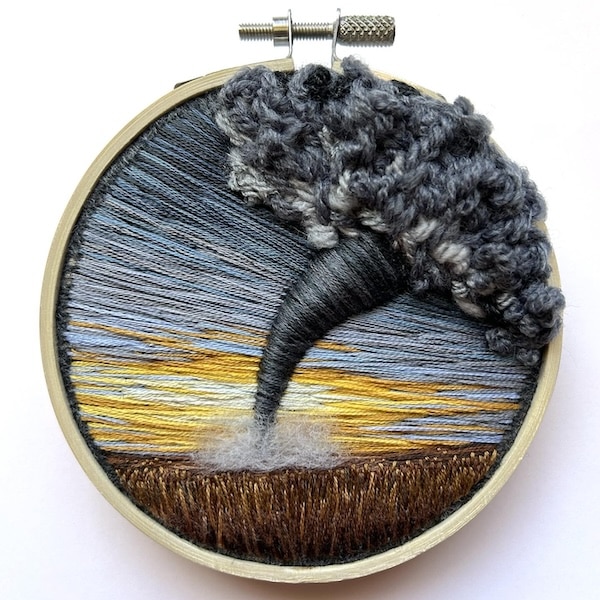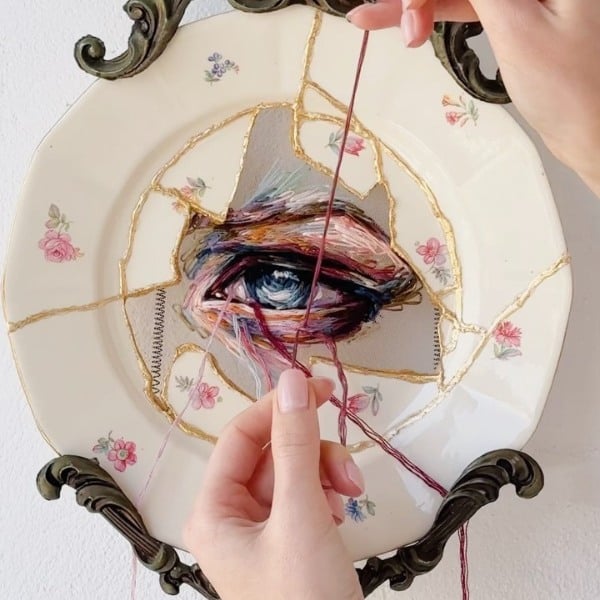
This post may contain affiliate links. If you make a purchase, My Modern Met may earn an affiliate commission. Please read our disclosure for more info.
As technology has advanced over the past several years, online classes have exploded. In fact, we bring you dozens of the best creative classes each month over a wide variety of platforms where you can expand your learning. But have you ever considered teaching?
Teaching your own online class (or classes) can be a great way to share your knowledge and create a new side hustle that could even turn into something full-time with the right amount of effort. And if you think there may not be a lot of money in the industry, think again. Forbes estimates that the e-learning market will grow 5% over the next 6 years, exceeding $240 billion.
The nice thing is that these days there are plenty of platforms where you can get started with teaching. While some, like CreativeLive, put out calls for teachers, others—like Skillshare—allow you to get started immediately, for free. And with tools like Instagram Live, Facebook Live, and Google Hangouts, you can even transform your following into a training ground and gauge interest in courses.
Let’s take a look at what you should consider before getting started, what platforms are available, and how to set yourself up for success.
Is teaching online classes right for me?
Whether you're into embroidery art or photo manipulation, hand lettering or watercolor illustrations, chances are your creative skill could make the perfect online class. But how do you know if teaching is right for you? Here are some things to consider.
Do you enjoy sharing your knowledge?
Are you a good communicator?
Are you able to pull apart your creative process step by step?
Do you like answering questions about your work?
Do you like working with technology?
Do you have time to properly plan and engage with your students?
If you’ve answered yes to the majority of those questions, it’s time to think about what you’ll teach and how it will be structured.
If you want to learn more about why people teach online, check out this interesting video from one of Skillshare’s top instructors.
Getting started with online teaching
Enthusiasm is fantastic, but what are the practical things you should consider when getting started with teaching online? If you’ve never had any formal teaching experience, it will be vital to get organized. Here are some things to consider when brainstorming for your classes and pulling together your lessons.
When thinking about what to teach, select your subject carefully. Too wide a theme can make it difficult to go in-depth into any one area and too niche a theme can alienate your student base. Spend some time doing a bit of keyword research and find out what people are looking for. Answer The Public allows you to type in any keyword and see questions people are asking, as well as the search volume.
Another great way to discover what people are looking for—or what is missing in the online teaching world—is to search some of the top platforms. What subjects seems to be the most popular? How can you differentiate yourself enough to attract students without competing against an oversaturated field? If you have a strong following, you may also want to survey your fans using Facebook, Instagram, or a newsletter. Remember, these people may be some of your first students, so understanding why they love your art and what they’d like to learn from you is key.
The next step is thinking about your course structure. It can take weeks to pull together a successful, well thought out lesson plan. This initial time investment is well worth it, as a clear plan will give you confidence and ensure your students have the proper expectations and get the most out of the course. And as you’ll be running the class on an ongoing basis, you’ll gain this time back in the long run.
Watch this video from CreativeLive as Ashley Nickels explains why creating a lesson plan is important.
Self-Hosted vs. Online Course Marketplace
One of the biggest decisions you'll have when embarking on your online teaching career is whether or not you want to place your course on an online marketplace or host it yourself. There are pros and cons to both decisions and what you end up selecting will be largely dictated by your circumstances and personal preferences.

Photo: Ryan Riggins
Here are some areas to consider when choosing what works for you.
Marketing
One of the biggest advantages of an online marketplace is its marketing power. As they earn money off a number of courses sold, these marketplaces have extra incentive to push their courses and make sure everything is optimized to get you in front of as many eyes as possible. You may already have a great following based on the marketing you've done around your creative career, and in this case, may decide that the extra push of the marketplace isn't a high priority. In that case, a self-hosted option will let your marketing efforts trickle into your classes, no revenue sharing necessary.
Commissions
As we touched on when looking at marketing, the time and effort a marketplace puts into building a brand and getting students don't come for free. Self-hosted options like Kajabi and Rukuzu ask for a flat yearly fee. Sort of like Shopify for online courses, they each have easy to follow technology that simply fits into your existing site. Marketplaces like Skillshare will instead pay a royalty on courses.
Self-hosting may be an initial investment—either in time or money depending on the platform—but it could give you greater control over your earnings, as you won't be subject to any commission changes that a marketplace may decide on. Think this couldn't happen? Leading marketplace Udemy faced huge backlash when adjusting their commission structure from 30/70 to 50/50 with little warning, leaving instructors with a sudden, 20% drop in revenue.
Student Contact
It goes without saying that if you are hosting your own course, you have full control over all aspects of contact with your students. You'll receive their email addresses and can use this information to hone your classes, engage regularly, get feedback, and directly market new classes or work you're doing.
Conversely, if you are working with a marketplace, they will own student contact information and will also control how frequently you will be able to engage with students. This could make it difficult to cross promote other activities, like ebooks, exhibitions, and creative products.
Time Investment
The support a marketplace can provide—including teacher instruction—is a huge timesaver. While teaching in any capacity is a time investment, you'll have to do much more work if you are self-hosted—not only in terms of marketing, but also payment processing, refunds, soliciting reviews, and much more.
One of the beauties of teaching on a marketplace is that after the initial legwork, it becomes more passive income. Sure, you'll be responding to questions and comments, but once the course is up, you'll continue to get paid monthly as people take the class. It's up to you how much extra marketing you want to invest, which lets you rely more heavily on the platform during times when your plate is full and letting you pitch in some additional marketing of your own when you have time.
So what are you waiting for? If you've ever thought about teaching, there's no better time to get started and share your creativity with the world.

Photo: Austin Chan
Related Articles:
5 Alternative Art Careers to Stay Creative and Move Beyond the Studio
5 Mistakes to Avoid When Starting a Freelance Business
15 Top Job Boards to Discover New Creative Career Opportunities
Creative People Share What They Wish They’d Known at Every Age






















































































